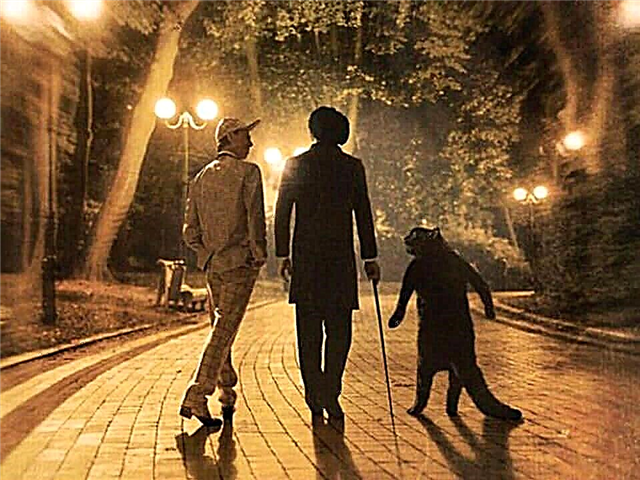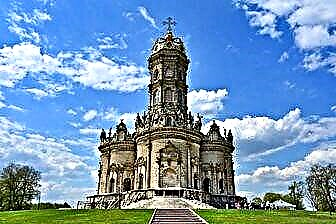Podolsk is a satellite city of Moscow on the Pakhra River, located just 15 km from the Moscow Ring Road. Many tourists in the capital do not even realize that this place is a real treasure house, consisting of noble estates and picturesque temples. It is also a great weekend route - to go very close, and there will be a lot of impressions.
The village of Podol received the status of a city only in 1781 thanks to the decree of Catherine II. For this, centuries later, grateful descendants erected a monument to the Empress, which you can look at while walking through the city square. The city has a rich and interesting history, reflected in museum collections, monuments, architecture and the appearance of Orthodox churches. Many come here to see one of the most picturesque churches in the country.

The best hotels and hotels at affordable prices.
from 500 rubles / day
What to see and where to go in Podolsk?
The most interesting and beautiful places for walking. Photos and a short description.
Manor Dubrovitsy
A noble estate that belonged to Prince B.A.Golitsyn in the 18th century. It is believed that the architectural ensemble was built in the 17th century. The predominant styles are baroque and classicism. In the XX century, all valuables and furniture were taken out of the manor house, therefore, today tourists can enjoy only the external appearance, everything is quite laconic inside. The house stands on the banks of the Pakhra River, surrounded by a landscape park.

Church of the Sign
The temple is located next to the Dubrovitsy estate and is part of its architectural ensemble. It was erected at the request of B. Golitsyn at the beginning of the 18th century. For the work, the prince invited an Italian architect. Undoubtedly, the church can be called one of the most beautiful in Russia. After the completion of the construction, the patriarch even refused to consecrate it because of the great similarity with Catholic churches. The building is made in the Golitsyn Baroque style.

Generation Square
The park was laid out in 2006 in honor of the next anniversary of Podolsk. On its territory there is a fountain, a clock tower - Podolsk "Big Ben", lanterns and flower beds. Earlier, apple trees grew on this place and memorial plaques were located. The clock tower is the architectural dominant of the square. In addition to the dial, a shield with the city emblem is attached to it. The structure is located in the middle of a green lawn and surrounded by a fence.

Fountain "The First Ball of Natasha Rostova"
A sculptural composition that appeared in 2014 on Leo Tolstoy Boulevard. The fountain with the figures of the heroes of the famous novel was created as part of a project to improve the pedestrian zone. The monument depicts Natasha Rostova and Andrei Volkonsky at the moment of their first dance. Actors L. Savelyeva and V. Tikhonov, who played the roles of these characters in the film adaptation of "War and Peace" by S. Bondarchuk, were chosen as the model.

Glory Square
The architectural ensemble of Glory Square is dedicated to the Great Patriotic War. It was created in 1970 by a group of Soviet sculptors. It consists of a stele and two granite slabs with soldiers' bas-reliefs. In 2010, the monument was reconstructed, adding several new elements to the composition: monuments in honor of the labor and military exploits of the inhabitants of Podolsk, committed during the Second World War and in honor of the soldiers who died in Afghanistan and Chechnya.

Museum of local lore
The museum appeared in the 1970s thanks to the efforts of the townspeople - the first exposition was formed from objects that they brought from home. In the 1990s, the institution moved to the Ivanovskoye estate, more recently - to a 19th century city mansion. Over the course of several decades, the museum's collection has grown significantly: it includes archaeological finds from the 9th-12th centuries, works by local artists, and natural exhibits.

Museum-reserve "Podillia"
The museum was founded in the 1930s on the territory of the house where the Ulyanov family lived in 1900. The leader of the proletariat himself has been here twice. In Soviet times, the building housed a museum named after him, which was later transformed into "Podillia". The exposition is located on the territory of the house, around there is a park zone representing the landscapes of Central Russia.

Podolsk Exhibition Hall
The gallery is located in the center of Podolsk. It covers an area of 2 thousand square meters and is intended for various exhibitions. The hall was opened in the 1970s. Since then, dozens of vernissages have taken place on its territory, where works from the leading museums of Russia have been brought. Today the gallery continues to play the role of an important cultural center of Podolsk, hosting concerts and organizing interesting events.

Trinity Cathedral
Orthodox church of the XIX century in the Empire style, located on Cathedral Square. It was built after the victory in the Patriotic War of 1812. The institution operated during the years of Soviet power, although the shopping arcade, which was part of the architectural complex, was demolished. The majestic temple is located on a hill and rises above the city buildings, already from afar attracting the attention of the observer.

Church of the Resurrection
It is believed that a wooden church on the site of a modern church has stood since the time of Ivan the Terrible. In the 1730s, a stone building was erected, which was pretty dilapidated by the middle of the 19th century. In the 1850s, restoration work was carried out, in 1911, the walls were re-painted (the frescoes and interior decoration were lost during the Soviet era). The building was badly damaged and was practically in ruins until it was restored in the 1990s.

Monument to Catherine II
The monument in honor of the Empress was erected in 2008. The fact is that it was she who granted Podolsk the status of a city in 1781. The statue is located on the territory of the Catherine Square. The autocrat is depicted sitting at a desk with a pen in her hands - apparently, she is signing a royal decree or composing an important letter. The composition is on a pedestal faced with granite slabs.

Sculpture "Podolsk - the city of the working class"
The monument is located on the square in front of the station. Thus, he is the first to meet the guests of Podolsk. The sculpture was made according to a joint project of a group of authors and installed in 1969. It is executed in the classical forms of Soviet monumental art, depicting working people strong and beautiful, capable of completely changing the world around them and building a bright future.

Monument to Podolsk cadets
The sculptural group is made of stainless steel. It was installed on the city square in 1975 on the eve of Victory Day. It consists of the figures of three fighters, over which a symbolic banner flies. The composition is dedicated to the cadets of the infantry and artillery schools who heroically defended the approaches to Moscow during the Second World War. They successfully repelled enemy attacks at the cost of their own lives until reinforcements arrived.

Estate Ivanovskoe
The estate was built at the beginning of the 19th century for Count F. Tolstoy. The master's mansion has all the features of the classic style. Symmetrical wings extend from the main building, decorated with a portico and columns, the rear facade faces the Pakhra bank. After the October Revolution, a hostel was organized in the house, which was abandoned by the 1980s. Now the estate houses a branch of the Museum of Local Lore and the Museum of Professional Education.

Manor Ostafyevo
Mansion of the late 18th century, formerly owned by the Vyazemsky-Sheremetyevs. It was built in a classical style, like most of the manors of that time. At the end of the 19th century, the estate was bought by Count S.D.Sheremetyev, who turned it into a Pushkin Museum. After nationalization, the museum worked only until the 1930s, then it was liquidated, the exhibits were partially sold out.The museum status was returned to the mansion only in the late 1980s.












